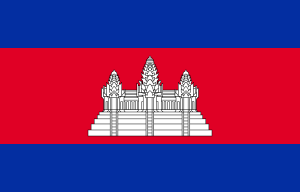Difference between revisions of "Language/Central-khmer/Grammar/Possessive-Pronouns"
m (Quick edit) |
m (Quick edit) |
||
| Line 99: | Line 99: | ||
[[Category:Central-khmer-0-to-A1-Course]] | [[Category:Central-khmer-0-to-A1-Course]] | ||
<span gpt></span> <span model=gpt-3.5-turbo></span> <span temperature=1></span> | <span gpt></span> <span model=gpt-3.5-turbo></span> <span temperature=1></span> | ||
==Other Lessons== | |||
* [[Language/Central-khmer/Grammar/Describing-Actions-and-States|Describing Actions and States]] | |||
* [[Language/Central-khmer/Grammar/Plurals|Plurals]] | |||
* [[Language/Central-khmer/Grammar/Basic-Word-Order|Basic Word Order]] | |||
* [[Language/Central-khmer/Grammar/Using-Conjunctions|Using Conjunctions]] | |||
* [[Language/Central-khmer/Grammar/Describing-People-and-Things|Describing People and Things]] | |||
* [[Language/Central-khmer/Grammar/Present-Tense|Present Tense]] | |||
* [[Language/Central-khmer/Grammar/0-to-A1-Course|0 to A1 Course]] | |||
* [[Language/Central-khmer/Grammar/Future-Tense|Future Tense]] | |||
* [[Language/Central-khmer/Grammar/Give-your-Opinion|Give your Opinion]] | |||
* [[Language/Central-khmer/Grammar/Gender|Gender]] | |||
{{Central-khmer-Page-Bottom}} | {{Central-khmer-Page-Bottom}} | ||
<span links></span> | <span links></span> | ||
Revision as of 21:35, 2 April 2023
Possessive pronouns play an important role in the Central Khmer language. In this lesson, you will learn how to form and use possessive pronouns in Central Khmer, including proper usage and pronunciation.
Consider exploring these related pages after completing this lesson: Give your Opinion & Adjectives.
Possessive Pronouns
Possessive pronouns are used to show ownership or possession of a noun. They are used in place of a noun and are often preceded by the word "របស់" (rɔh-bsɑ) which means "of".
The following table shows the Central Khmer possessive pronouns:
| Central Khmer | Pronunciation | English |
|---|---|---|
| ខ្ញុំរបស់ខ្ញុំ | knyom rɔh-bsɑ knyom | mine |
| បងរបស់បង | baŋ rɔh-bsɑ baŋ | yours |
| នាងរបស់នាង | nɑɛŋ rɔh-bsɑ nɑɛŋ | hers/his |
| យើងរបស់យើង | yəəŋ rɔh-bsɑ yəəŋ | ours |
| អ្នកដែលខ្ញុំចង់បោះបង់របស់អ្នក | nɛək dael knyom cŋaŋ bɑhɑŋ rɔh-bsɑ nɛək | what I want to be yours |
Note that the pronoun for hers/his is the same in Central Khmer.
The word "ក្រុម" (krum) means "group" in Central Khmer. To indicate possession by a group, we use the plural form of the possessive pronoun. For example:
- ក្រុមរបស់ខ្លួនឆ្ងាយជាងក្រុមរបស់យើង។ (krum rɔh-bsɑ khluən cŋaəy cieŋ krum rɔh-bsɑ yəəŋ.) - Our group is farther than your group.
Examples
Here are some examples of possessive pronouns in use:
- ខ្ញុំមានផ្ទេររបស់ខ្ញុំ។ (knyom miən pteah rɔh-bsɑ knyom.) - I have my own house. - ការងាររបស់ខ្ញុំមានប្រាក់ដែលច្បាស់។ (ka krɑh cɑ gɑnɑh rɔh-bsɑ knyom miən prɑk dɛəl cbaah.) - My job has a good salary. - នាងបានទទួលបង្គង់របស់នាង។ (nɑɛŋ baan tɔtluh baŋkrɑhŋ rɔh-bsɑ nɑɛŋ.) - She received her necklace. - យើងធ្វើការជាងគេដែលគេមានរបស់ខ្ញុំ។ (yəəŋ tvəə kaa cieŋ kae dael kae miən rɔh-bsɑ knyom.) - We work harder than they do. - ស្រុករបស់ខ្ញុំកំពុងអស់។ (srɔɑk rɔh-bsɑ knyom komm puəŋ ɑh.) - My village is growing.
Possessive Adjectives
Possessive adjectives function like possessive pronouns, but they are placed before the noun they describe. They are formed by adding the possessive particle "របស់" (rɔh-bsɑ) to the appropriate personal pronoun.
The following table shows the Central Khmer possessive adjectives:
| Central Khmer | Pronunciation | English |
|---|---|---|
| ខ្ញុំរបស់ | knyom rɔh-bsɑ | my |
| បងរបស់ | baŋ rɔh-bsɑ | your |
| នាងរបស់ | nɑɛŋ rɔh-bsɑ | her/his |
| យើងរបស់ | yəəŋ rɔh-bsɑ | our |
| អ្នករបស់ | nɛək rɔh-bsɑ | your |
Examples:
- ខ្ញុំកំពុងបង្រែប្រួលភាសាររបស់ខ្ញុំ។ (knyom komm puəŋ baŋrea-braɨ bɑhsaah rɔh-bsɑ knyom.) - I am improving my language skills. - ផ្ទះរបស់បងមានសំណាក់មិនបានទេ។ (pteah rɔh-bsɑ baŋ miən somnɑhk mɨn bɑɛn-teh.) - Your house needs repairs.
Practice
Practice using possessive pronouns by translating the following sentences:
- His car is faster than mine.
- Our books are in the library.
- Their house is bigger than hers.
- My parents are coming to visit.
- Her children go to that school.
Conclusion
In this lesson, you have learned how to form and use possessive pronouns and possessive adjectives in Central Khmer. Make sure to practice using them in context to improve your understanding of possessive structures in the language.
Impressive work on finishing this lesson! Explore these additional pages to enhance your understanding: Gender & Conditional Mood.
Other Lessons
- Describing Actions and States
- Plurals
- Basic Word Order
- Using Conjunctions
- Describing People and Things
- Present Tense
- 0 to A1 Course
- Future Tense
- Give your Opinion
- Gender
